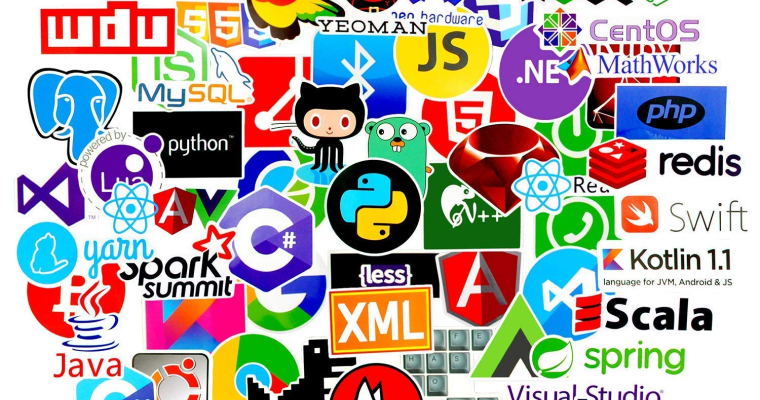Today, online gambling is big and still growing — the global market pulled in about $78.7 billion in 2024. Most players now bet through apps or websites: around 77% of bettors place bets mainly online or via mobile. And nearly 80% of online gamblers use smartphones as their main device. This shift toward mobile-first gaming aligns with broader mobile game development trends, where responsive design and optimized performance are essential.
A remote gaming server (RGS) is the engine behind those apps and sites. It runs the games, talks to payment systems, logs play for rules checks, and helps teams add new titles fast. If your RGS can’t scale or meet rules in the US, EU, CA, or AU, you lose players and face trouble with regulators. This post will show simple, practical steps to pick or build an RGS that scales, stays compliant, and keeps players happy.
What is a Remote Gaming Server (RGS)?
A remote gaming server (RGS) is a central computer system that runs casino games and game rules. It stores the game code, handles bets, and sends play results to apps and web clients. Operators use an RGS to manage many games from one place without changing each client. This makes it faster to add new titles, fix bugs, and keep rules consistent across markets. A good RGS helps meet local laws by centralizing logs and reports for audits. Put simply, an RGS is the engine that powers modern online casinos.

In iGaming, an igaming remote game server connects game studios, operators, payments, and player accounts. It uses APIs to talk to wallets, KYC systems, and player databases. Every spin or action is logged on the server so operators can prove fairness and trace issues. When demand rises, the RGS can scale across many servers to keep game speed steady. This scaling prevents lag during traffic spikes and keeps the player experience smooth. Because new formats like live or crash games arrive fast, RGS makes rolling out these games easier. For operators looking to expand their game portfolio, understanding different game development stages and working with experienced game development studios can accelerate time-to-market.
A server-based gaming casino runs most key work on the server side rather than on each device. Key features include certified random number generation, secure payment handling, and real time reporting. Other must-have parts are player and session management, game version control, and anti-fraud checks. Good platforms include APIs for partners and dashboards for monitoring KPIs and risk trends.
Operators also value built-in tools for compliance with GDPR, MGA, and regional rules. For context and examples, see a list of classic web titles at old games and a review of mobile payment Boku casinos . This setup lowers costs and speeds time to market. It also helps teams run A/B tests and improve game conversion using dashboards each week with reporting tools.
Core Components of a Remote Gaming Server (RGS)
RNG & Fairness
RNG is the part that makes game results random and fair. It must be certified by a lab and easy to prove in an audit. Keep RNG outputs logged and signed so you can show them to regulators. Offer both software and hardware RNG options when the market or license needs them. Make sure entropy sources and seeds are stored and rotated safely.
Tip: use a signed log file that your auditor can verify without extra tools.
KPIs: RNG audit pass rate; time to produce signed RNG logs.
Game Engine & Business Logic
The engine runs rules: spins, bonuses, and payouts. Keep the rules data-driven so math tables can change without code deploys. Version control for logic avoids mistakes and makes rollbacks fast. Test each rule change in a sandbox before you go live. Make game math transparent for certification teams. Whether building with traditional engines or exploring hyper-casual game development approaches, maintaining clear separation between game logic and presentation layers is crucial.
Tip: ship changes as configs, not code.
KPIs: percent of releases needing rollback; test pass rate for new logic.
Content Management System (CMS)
The CMS holds game files, art, and metadata. It should let ops publish, schedule, or roll back games with one click. Use CDN links so assets load fast worldwide. Show previews in staging before live release to catch errors early. Keep old builds available in case you must revert.
Tip: require a checklist before any CMS publish (metadata, RTP, assets).
KPIs: time from publish to live; number of failed rollouts.
APIs & Integration Layer
APIs let frontends, wallets, and partners talk to the RGS. Design clear, versioned endpoints and provide sandbox keys. Use secure auth (mutual TLS or signed tokens) and strict rate limits. Document examples so partners integrate fast and with fewer errors. Send webhooks for big events (jackpots, fraud flags).
Tip: publish a “quick start” SDK for common stacks.
KPIs: partner integration time; API error rate.
Wallets & Payments
Wallets must be atomic—each bet or payout is one safe transaction. Keep a ledger that ties every move to an order id and a player id. Reconcile with payment providers every day to catch mismatches fast. Support multiple rails (cards, e-wallets, mobile billing) to reduce friction.
Tip: implement idempotent APIs to avoid double charges under retries.
KPIs: reconciliation mismatch rate; average wallet transaction latency.
Player & Session Management
Session services track who is logged in, what game they play, and their limits. Keep session state small so reconnects are fast on mobile. Enforce self-exclusion and deposit limits centrally so rules apply across all clients. Log session changes to help with disputes and audits.
Tip: store non-critical state in a fast cache and critical state in an auditable store.
KPIs: average reconnect time; session consistency errors.
Reporting, Auditing & Compliance Tools
Logs and reports are how you prove fairness and tax numbers. Build ready reports for RTP, GGR, and suspicious activity. Keep logs immutable and retained by region rules. Make exports simple for auditors and regulators. Tie each report to raw logs so everything traces end-to-end.
Tip: automate common regulator reports and schedule them.
KPIs: time to generate regulator report; audit completeness score.
Security & Anti-Fraud
Protect money and data with encryption, hardened servers, and access controls. Run regular penetration tests and use a bug bounty program. Feed session, payment, and chat data into a real-time fraud engine. Calibrate rules to lower false positives so real players are not blocked.
Tip: keep a manual review queue and a clear appeal path for flagged players.
KPIs: fraud detection precision; percent of false positives.
Scaling, Load Balancing & Edge Deployments
Design for many players by scaling pieces separately, not the whole stack. Use stateless frontends with shared state stores to make horizontal scaling simple. Put edge nodes near big player markets to cut latency. Test autoscaling under simulated traffic spikes.
Tip: run “game day” load tests each quarter to find bottlenecks early.
KPIs: average player latency at peak; autoscale success rate.
DevOps, Testing & Release Process
Automate tests: unit, integration, and sandbox certification runs. Use canary releases so only a small share of players see a new build first. Keep infrastructure as code so environments are repeatable. Log deployment health and rollback quickly if issues appear.
Tip: require green tests in CI before any production roll.
KPIs: percent of failed deployments; mean time to rollback.
Trends Reshaping RGS in 2025

In 2025, Remote Gaming Servers (RGS) are changing fast. Big forces are shaping them: cloud and edge hosting, AI, stricter rules, and new fast games. Each trend affects how operators build and run RGS. Below are the simple, practical points you need to know.
Scalability
Cloud servers and edge nodes let RGS grow and shrink with demand. Instead of buying lots of hardware, operators use cloud instances and add more when players spike. Edge servers sit closer to players and cut lag for fast games. Hybrid setups (cloud + on-premise + edge) are common now because they balance speed, cost, and control. Teams test autoscaling and failover so games don’t slow down on big events. If your RGS is not cloud-ready, you risk slow play and lost revenue during peaks. (See industry cloud trend reports.)
AI — RNG
AI is used two ways with RGS. First, AI helps check RNG output and spot bias or faults faster than humans can. Second, AI finds player patterns and suggests games or bonuses that keep players longer. Smart AI can also spot fraud, bots, or risky play before harm grows. Operators use AI carefully because regulators want clear rules about automated decisions. Adding AI needs logged decisions and human review to pass audits. The integration of AI in game design extends beyond RNG validation to create more sophisticated player experiences and behavioral analysis.
Compliance
Regulators are stricter and more evidence-based. Some bodies now focus on real risk, not just checklists. RGS must keep good logs, prove RNG fairness, and show fast KYC/AML checks. Different markets need different settings: what is OK in one country may be forbidden in another. Build a policy layer that turns rules on or off per region. That makes audits easier and cuts license risk.
New game formats
Fast, social formats are growing. Crash games and short multiplayer rounds give quick thrills and high engagement. These games need very low latency and tight sync between players. RGS must support many small, fast events and show live leaderboards or chats without lag. Testing and edge placement are key to keeping these games fair and fun. Beyond crash games, operators are also integrating traditional formats like poker tournament software and lottery platforms into their RGS ecosystems.
| Region | Licensing model | Main regulator / note | RNG cert required? | KYC / AML strictness | Quick note |
|---|---|---|---|---|---|
| US | State-by-state licenses (varies) | Multiple state regulators; federal laws apply to payments & fraud. | Usually yes (state labs) | High; tied to state rules & federal AML. | Complex: one platform may need many state settings. |
| EU | Country / EU rules; many operators use EU hubs (e.g., Malta) | MGA (Malta) common hub; GDPR applies across EU | Yes; lab certification standard | High; GDPR + local rules | Focus on data protection and cross-border rules. |
| Canada | Provincial model (Ontario, others) | Provincial bodies (AGCO / iGaming Ontario), federal AML laws | Yes (province rules vary) | High; province-level KYC + FINTRAC rules | Operators must adapt per province. |
| Australia | Largely restricted for online casinos (federal law + states) | ACMA + state bodies; Interactive Gambling Act limits local casinos | Depends; licensing rare for local casino ops | High; strong AML & harm-min rules | Online casino products are restricted for locals; sports betting allowed under rules. |
Technical Challenges in RGS Development
Security, RNG, latency, and audits are hard — but new tech gives real, surprising wins.
1) Make RNG provably fair using cryptography (and blockchain tools).
You can attach a cryptographic proof to each random number so anyone can check it later. This is what “provably fair” systems and services like Chainlink VRF do: they give a tamper-proof proof with each draw so players or auditors can verify fairness themselves. That means less trust drama and faster audits.
2) Mix hardware RNG + NIST rules for extra trust.
Use a hardware source (like Intel’s on-chip DRNG / RDRAND) together with a certified DRBG pattern from NIST. Hardware RNG gives real-world entropy; NIST rules give standards auditors expect. Together they cut the “is it random?” question in half.
3) Put logic at the edge — not just assets.
Edge compute (AWS Wavelength, Cloudflare Workers, Lambda@Edge) now runs code near players. For crash games or live multiplayer, moving small parts of game logic and session routing to edge nodes can shave tens of milliseconds off round trips — enough to keep players happy and synchronous. It’s not magic; it’s placing the right code close to users.
4) Use homomorphic encryption for private analytics.
Want to run behavior analytics without seeing raw user data? Homomorphic encryption (Microsoft SEAL is a real library) lets you compute on encrypted data. You get risk signals and models without exposing personal data — a neat win for GDPR and audits.
5) AI that checks RNG health — faster than humans.
AI can watch RNG outputs and spot tiny statistical drifts before a human notices. Combine that with signed logs and you get alarms that matter — not noise. For fraud and abuse, adaptive behavioral engines (used by vendors like Featurespace) can cut losses significantly by spotting patterns in real time.
6) Serverless + edge for burst traffic (no heavy ops).
Using serverless edge functions for non-critical logic (notifications, leaderboards, non-game UI) means your core game engines stay lighter and scale better. It lowers cold start pain if you design caches right. Cloud providers already offer this as production tech.
7) Make audits painless with signed, immutable logs.
Store every RNG draw, payout, and admin action as a signed record in write-once storage. When a regulator knocks, you hand them a short package with proofs instead of digging through raw logs. That shortens audit time and reduces fines.
8) Emerging Platform Support – As operators expand into new formats, ensuring RGS compatibility with VR game development and AR gaming experiences becomes increasingly important for future-proofing.
Small Action Checklist
-
Add signed RNG logs (crypto signatures + timestamp).
-
Pilot Chainlink VRF or a provably-fair feed for a test game.
-
Run a small edge pilot (one region) for your fastest game — measure 95th-percentile latency.
-
Enable adaptive fraud detection (trial with vendor) and compare fraud loss before/after.
-
Time to prove a round (signed proof produced & verifiable) — target: <1s.
-
95th-percentile latency at peak after edge deploy — aim for <80–120 ms depending on region.
-
Fraud loss reduction after adaptive engine — vendor claims often show large % drops (example vendors report up to ~40% in some financial/fraud cases).
How to Choose or Build Your Remote Gaming Server

Choosing whether to build your own Remote Gaming Server (RGS) or buy a third-party solution is one of the biggest decisions an operator makes. The right choice depends on time, budget, team skills, compliance needs, and how unique your games or products are. Building in-house gives full control and deep customization, but it needs skilled devs, ops, and ongoing money for updates and audits.
Buying a third-party RGS gets you fast time-to-market, regular vendor updates, and hands-on support — but you may trade some control and pay ongoing fees. Many operators choose a hybrid path: buy a proven RGS core and build custom modules on top. Before you decide, run a short pilot or proof-of-concept so you feel the real work and cost. For general build vs buy reasoning, studies show buying SaaS often saves time and money for non-core problems.
In-house build vs Third-party RGS provide
If you build in-house, you keep every detail: math tables, wallet rules, integration flow, and deployment cadence. This helps if you need unique game mechanics, special compliance hooks, or IP ownership. But you must pay for engineers, security, audits, and long-term ops. Expect slower launches early and steady investment later.
Third-party RGS providers come with ready tech, game connectors, and compliance modules. They often keep up with industry trends (cloud, edge, integration patterns) and can plug you into game catalogs and payment rails quickly. You trade some flexibility and may need to adapt business rules to the vendor model. Big provider guides and market articles list many vendors and show how turnkey options cut launch time.
Decision checklist
-
Define your must-haves: licensing, regions, payment rails, and unique game features.
-
Estimate time-to-market: how fast must you launch new games or markets?
-
Calculate TCO (3–5 years): include dev salaries, infra, audits, and vendor fees.
-
Check compliance fit: can the option handle GDPR, MGA, provincial US rules, or other local laws?
-
Test integrations: request sandbox keys and run a simple wallet + game flow test.
-
Measure scaling needs: simulate peak traffic for your biggest markets.
-
Review incident support: SLA, response time, and vendor escalation paths.
-
Plan exit: how easy is it to switch providers or move logic in-house later?
-
Run a 30–90 day pilot with real load and a tiny live audience before full roll.
-
Get internal sign-off on security and compliance checklists before production.
RGS Providers vs In-House Development
Some operators also work with specialized providers like Push Gaming or explore turnkey casino platforms to accelerate market entry.
| Criteria | Third-party RGS | In-house build | Notes |
|---|---|---|---|
| Time to market | Fast (weeks–months) | Slow (months–years) | Buy if speed is critical. |
| Upfront cost | Lower initial capex, recurring fees | High upfront capex, lower vendor fees | Consider 3–5 year TCO. |
| Customization | Moderate to high (depends on vendor) | Very high | Build if you need unique game math/IP. |
| Compliance burden | Vendor helps but you still own license risk | You own full compliance stack | Check vendor coverage per region. |
| Maintenance & updates | Vendor handles patches & some security | You must patch and run ops | Faster vendor updates vs full control in-house. |
| Scalability | Built by vendor; cloud/edge ready often | Must design for autoscale & edges | Vendors often use cloud/edge tools. |
| Integrations (wallets, KYC) | Often ready | Need to build connectors | Sandbox tests reduce surprises. |
| Security responsibility | Shared (vendor + operator) | Fully operator | Ensure vendor pen tests & bug bounty. |
| Exit complexity | Medium (data + migration effort) | Low (you own everything) | Plan migration steps early. |
Best Practices for Scaling a Gambling Casino Remote Gaming Server
Scaling well means players get steady play even in peak times. Start with monitoring and observability: metrics, traces, and real-time dashboards that show latency, errors, queue sizes, and player counts. Make automated alerts for real problems so engineers fix them fast. Design systems to scale by component: stateless frontends, separate stateful stores, and dedicated wallet/ledger services. That lets you add capacity where it matters without wasting money.
AI-based load balancing and autoscaling are a modern boost. AI can predict traffic patterns and shift capacity before spikes hit, or route players away from stressed nodes. This reduces wasted capacity and prevents lag during big events. Vendors and cloud teams now ship AI tools for smarter load decisions — they learn from historical patterns and adjust thresholds dynamically.
Security and compliance must be on a continuous cycle. Don’t treat audits as one-time tasks. Run automated security tests, regular pen tests, and scheduled compliance runs (RNG checks, KYC audits). Keep audit packs ready — signed RNG logs, payment reconciliations, and KYC snapshots — so regulators get what they need fast. Practice incident drills and keep playbooks for outages and breaches. KPIs to track: 95th-percentile latency at peak, autoscale success rate, MTTD, and MTTR.
The Future of iGaming Remote Game Servers
Global expansion strategies
Growing into new markets means local rules, local data laws, and good latency. Use a mix of cloud regions and edge nodes close to big player pools. Consider local partners for payments and KYC to reduce friction and speed approvals. Feature-flag market rules so you can switch behavior per region instantly.
AI-driven responsible gaming
AI will power smarter, earlier intervention for problem play. Models can spot risky patterns and trigger personalized cooling measures, or route players to help resources. Keep human review in the loop and log decisions to meet regulatory scrutiny.
Edge-based low-latency deployments
Moving parts of your stack to edge nodes — not just static assets — cuts round trips and helps fast formats like crash games and multiplayer rooms. Edge compute and regional nodes are standard tools for game companies now; they reduce lag and improve fairness when players must stay tightly synced.
Conclusion & Call to Action
Investing in the right RGS in 2025 is not optional — it’s strategic. A modern RGS improves speed to market, keeps games fair, and helps you meet strict rules across US, CA, EU, and AU. Whether you build in-house, buy a third-party RGS, or mix both, do a short pilot, measure the KPIs above, and make compliance a continuous practice.
If you’d like, I can: draft a 30–90 day pilot plan for your team, build the decision matrix in an Excel file, or prepare a short vendor questionnaire you can send to RGS providers. Book a consultation/demo to evaluate your RGS needs — tell me which option you want and I’ll prepare a tailored 30-day plan and a one-page ROI snapshot.






